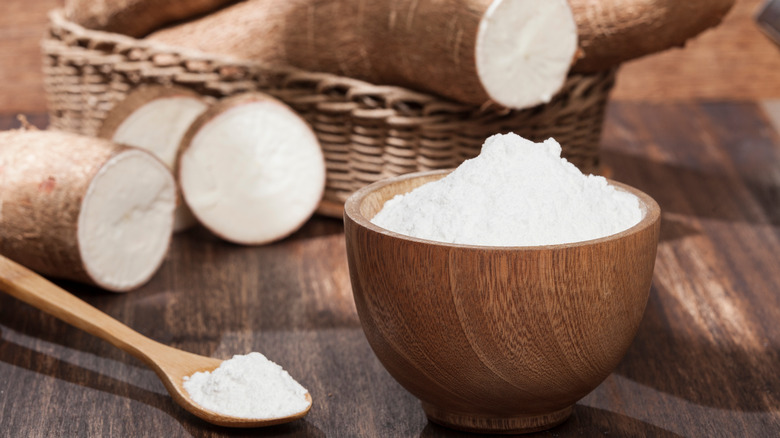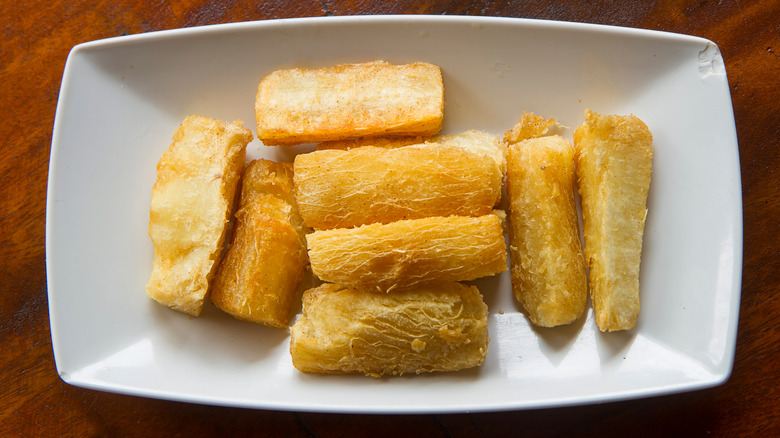Yuca Vs Yucca: What's The Difference?
If you've ever been to a Latin American restaurant or tend to order anything that says "fries" on a menu, chances are you've come across yuca — occasionally spelled as yucca. Yuca is a staple in Latin and Dominican cuisine. On an American menu, it often takes the form of a french fry, replete with a golden exterior and dipping sauce.
But while yuca may sound and taste familiar, what about yucca? These homonyms are often used interchangeably, but while yuca and yucca sound the same, they certainly come with different tastes. One is an edible plant that originates from cassava — a starchy root vegetable and popular side dish. It can even be used as an alternative cake ingredient. The other, however, is simply a plant, albeit one with a surprising, utilitarian purpose.
Read on to know which is worth a taste and which to steer clear of eating, unless you like the texture of spiky leaves.
Yuca is a plant doubling as a vegetable
Yuca, also known as the root of a cassava plant, is a starchy potato-like vegetable popularized in Latino cultures. Cassava originates from South America and isn't dissimilar to yams or sweet potatoes, according to the Lakewinds Coop. Often sold as a whole root, yuca comes with a ginger-like exterior that requires peeling prior to consumption.
As for the flavor of this vegetable, that depends entirely on the cassava plant. Cassava can be either sweet or bitter, though the sweeter, nuttier version is what you're more inclined to find at an American grocery store, according to Eater. All yuca contains some degree of cyanide, with higher levels in the more bitter iteration. Luckily, this type of yuca isn't typically found in the United States, and despite the cyanide in the sweeter cassava, it remains safe to eat, says Food52. Just make sure to peel and cook your yuca first.
Even when cooked, yuca remains slightly dry — making a dipping sauce a must for adding flavor and punch. The type of sauce varies by country, ranging from Cuba's garlic sauce to Peru's cheese and chili condiment, according to Serious Eats. Ketchup, who?
Beyond fries, yuca can also be mashed or baked as a carb-filled side dish.
Yucca is a plant doubling as an everyday product
Chances are you won't find yucca on a menu unless there's been a typo. The reason is that this desert plant doesn't actually have an edible root, nor does it share any relation to cassava, also known as "yuca."
Rather, yucca is a versatile and varied plant often found in Arizona and American desert climates. According to Better Homes & Gardens, yucca plants are both tough and resilient, capable of enduring droughts and high heat. They can even grow up to 30 feet tall, via the LA Times.
Yet, while some yucca plants may indeed yield edible components such as seeds and delicate white flowers, the actual yucca root should not be eaten. Yucca root has an entirely different purpose, doubling as soap and even shampoo. So the next time you come across cassava on a menu while dining at a Latin restaurant, you can rest assured knowing that you smell of yucca while enjoying a delectable yuca dish — hopefully not the other way around.

